Publications
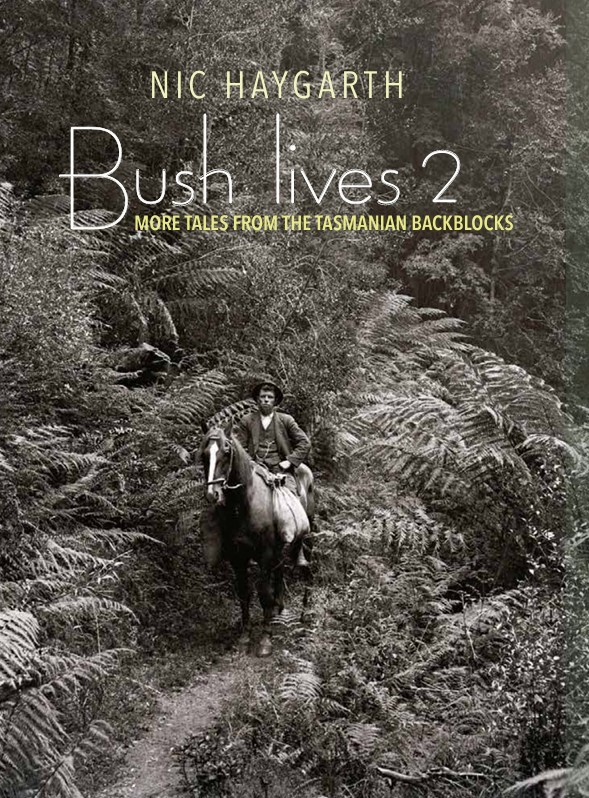
Bush lives 2: more tales from the Tasmanian backblocks
Forty South Publishing, Cambridge, Tas, 2025
Mysterious reefs, lost graves, forgotten huts, mistaken locations, phantom-like personalities. These are blessings and challenges to an historian. Disappearing ways of life and our vanishing bush heritage also lure me into the historical backblocks. The stories in this volume explore remote Tasmanian lives and lifestyles.
Copies signed by Nic will be delivered to your door.
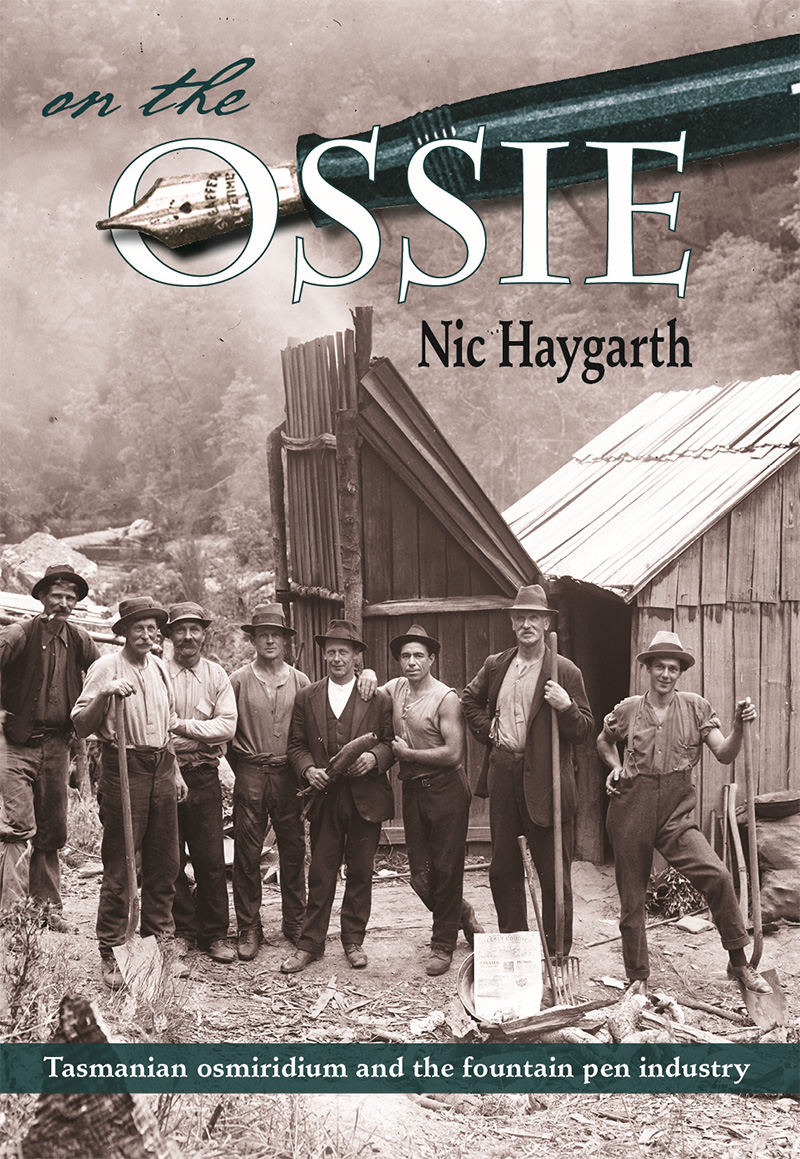
On the ossie: Tasmanian osmiridium and the fountain pen industry.
On the ossie: Tasmanian osmiridium and the fountain pen industry.
Millions of words flowed from the serpentine hills of western Tasmania. The Waratah and Adamsfield districts produced ‘point metal’ osmiridium, used to tip the gold nibs of fountain pens. For a time in the early 1900s Tasmania had a world monopoly on point metal ‘ossie’—an alloy much more valuable than gold. Sent to New York and London to drive Waterman, Swan, Sheaffer, Parker, Onoto and Conway Stewart pens, Tasmanian osmiridium became a signatory to startling world events. It also bolstered family budgets at home. To be ‘on the ossie’ was to have the chance to escape poverty and drudgery. Like gold strikes across the globe, Tasmania’s rare earth quickened diggers’ pulses—and, astonishingly, inspired a challenge to Hollywood dominance of Australian cinemas.
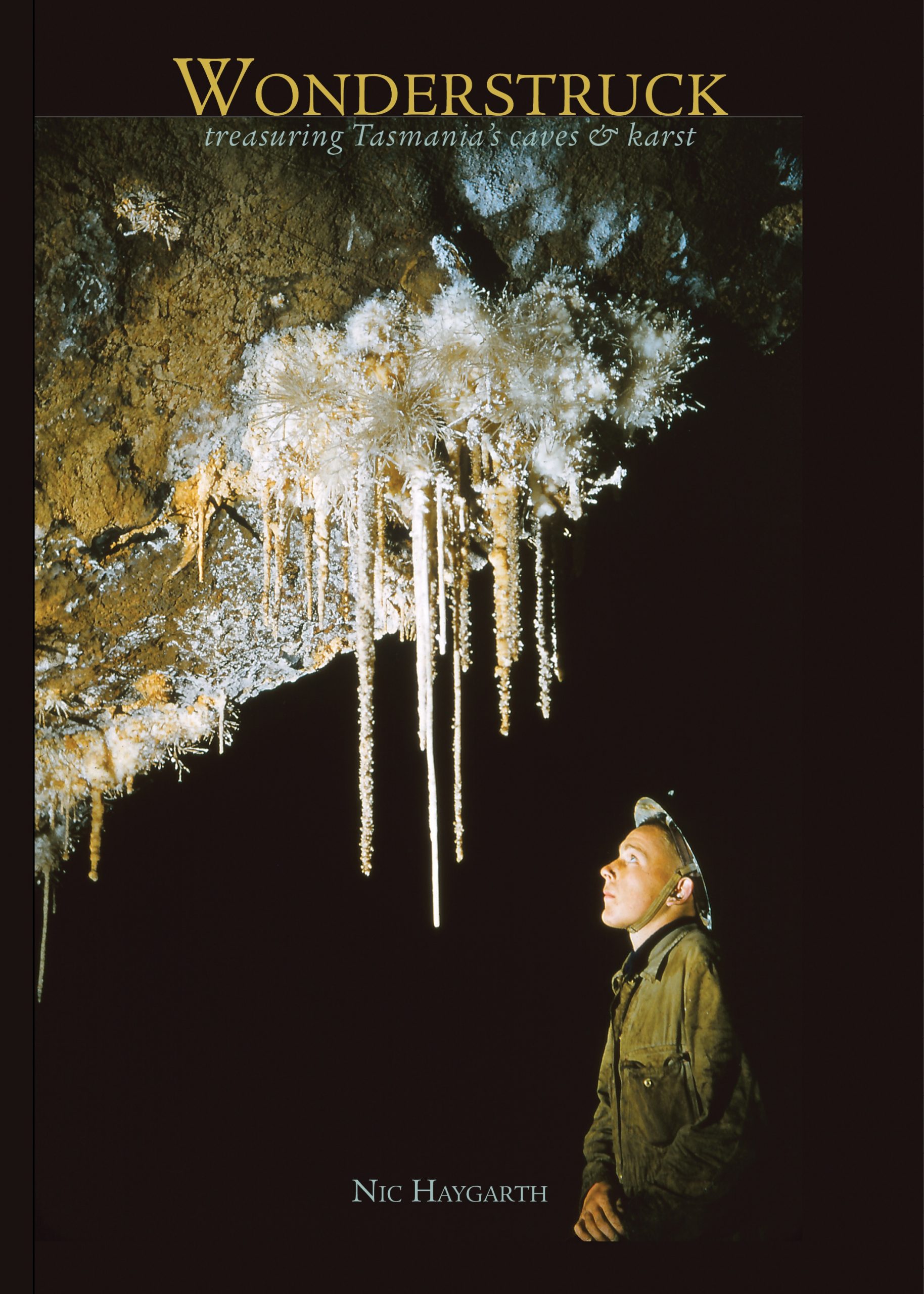
Wonderstruck: treasuring Tasmania’s caves and karst: a history of Tasmanian cave tourism, exploration and conservation, Forty South Publishing, Lindisfarne, Tas, 2015.
Caves are places of wonder and mystery. By 1840 a Gothic regime of candles and bark torches. heightened the thrill of the ‘Sublime’ within Wet Cave on Mole Creek, in northern Tasmania. More than a dozen Tasmanian tourist caves, from Gunns Plains to Ida Bay, have glistened in guiding light. Farmers turned to home-baked hospitality when the Industrial Revolution mobilised urban excursionists, opening private ‘show’ caves by the glow of acetylene gas. After World War II, Sam Carey’s Tasmanian Caverneering Club, the first Australian caving club, began a quest to discover, record and protect Tasmanian caves which continues today. Wonderstruck: treasuring Tasmania’s caves and karst is the story of these journeys of subterranean discovery, the myths and the legends, the explorers and the ecological battlegrounds, the ‘master’ caves and the megafauna dens, the entrepreneurs and the raconteurs.
This book can be bought online, click here
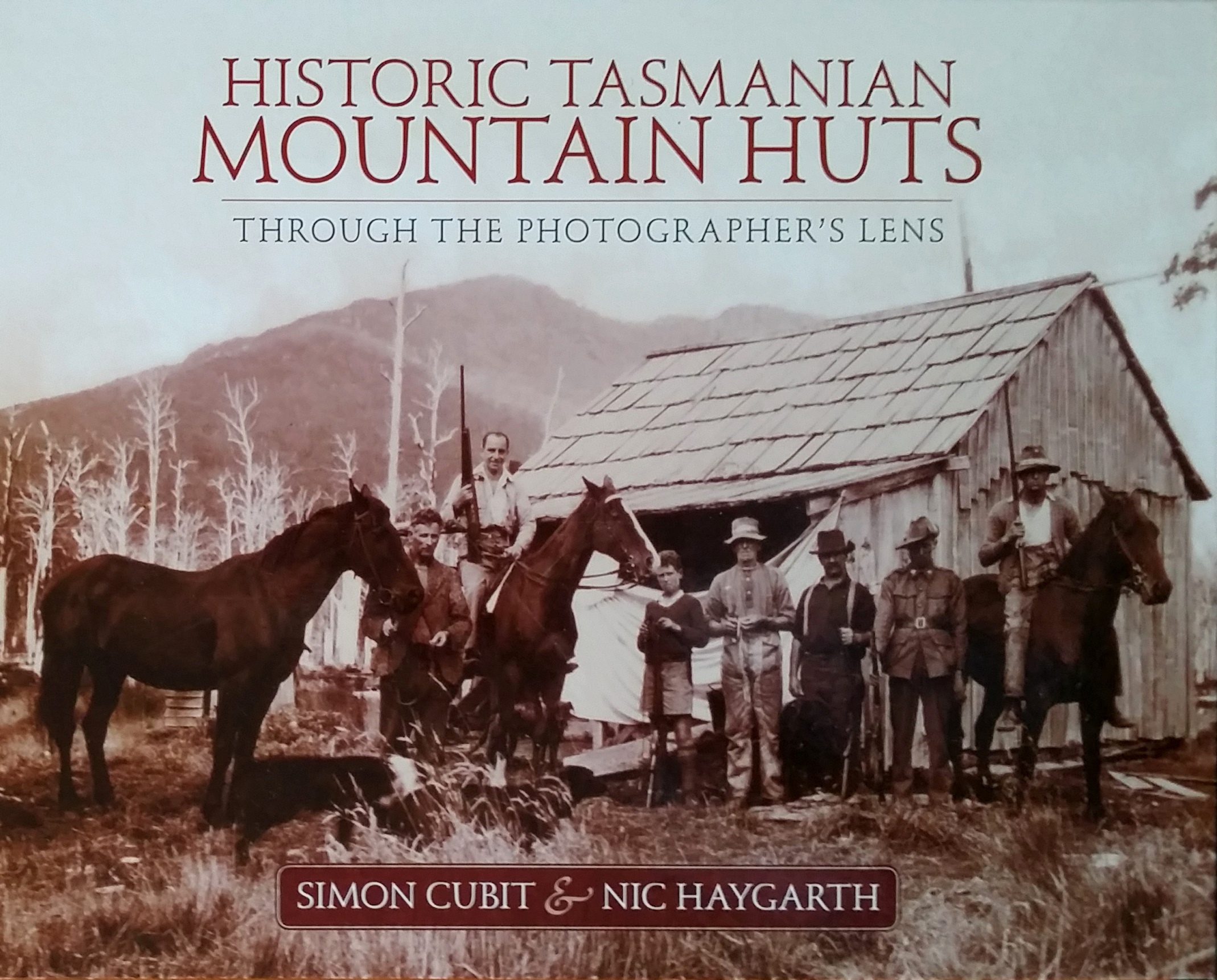
Historic Tasmanian mountain huts: through the photographer’s lens, Forty South Publishing, Lindisfarne, Tas, 2014 (with Simon Cubit)
The introduction of portable dry plate cameras in the late 1870s marked the beginning of a golden age of Tasmanian landscape photography. With cameras on their backs, adventurers explored the wilds of Tasmania, recording not just the dramatic physical features they found but also the typically rough shelters of the miners, hunters, stockmen and piners who lived or worked in the bush. In this beautiful book Simon Cubit and Nic Haygarth use this rich photographic heritage as the basis for a series of extraordinary stories about human enterprise in the Tasmanian highlands.
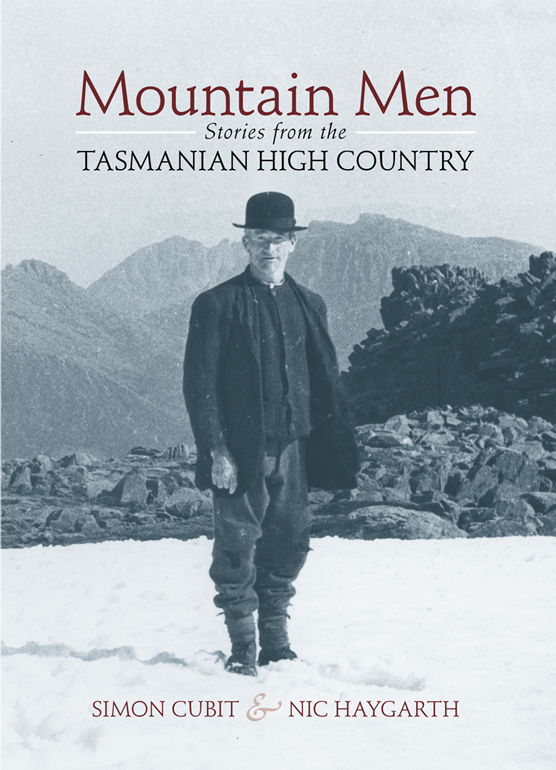
Mountain men: stories from the Tasmanian high country, Forty South Publishing, Lindisfarne, Tas, 2015 (with Simon Cubit)
Mountain men comprises the stories of ten men who lived or worked in the Tasmanian high country from 1870 to 1990. Hunters, mineral prospectors, guides, rangers and tourism operators, horse riders and walkers, they all played a role in the development of nature tourism and recreation in the Cradle Mountain–Lake St Clair region. More than just a collection of biographies, the book creates a compelling narrative of the European history of today’s central highlands.
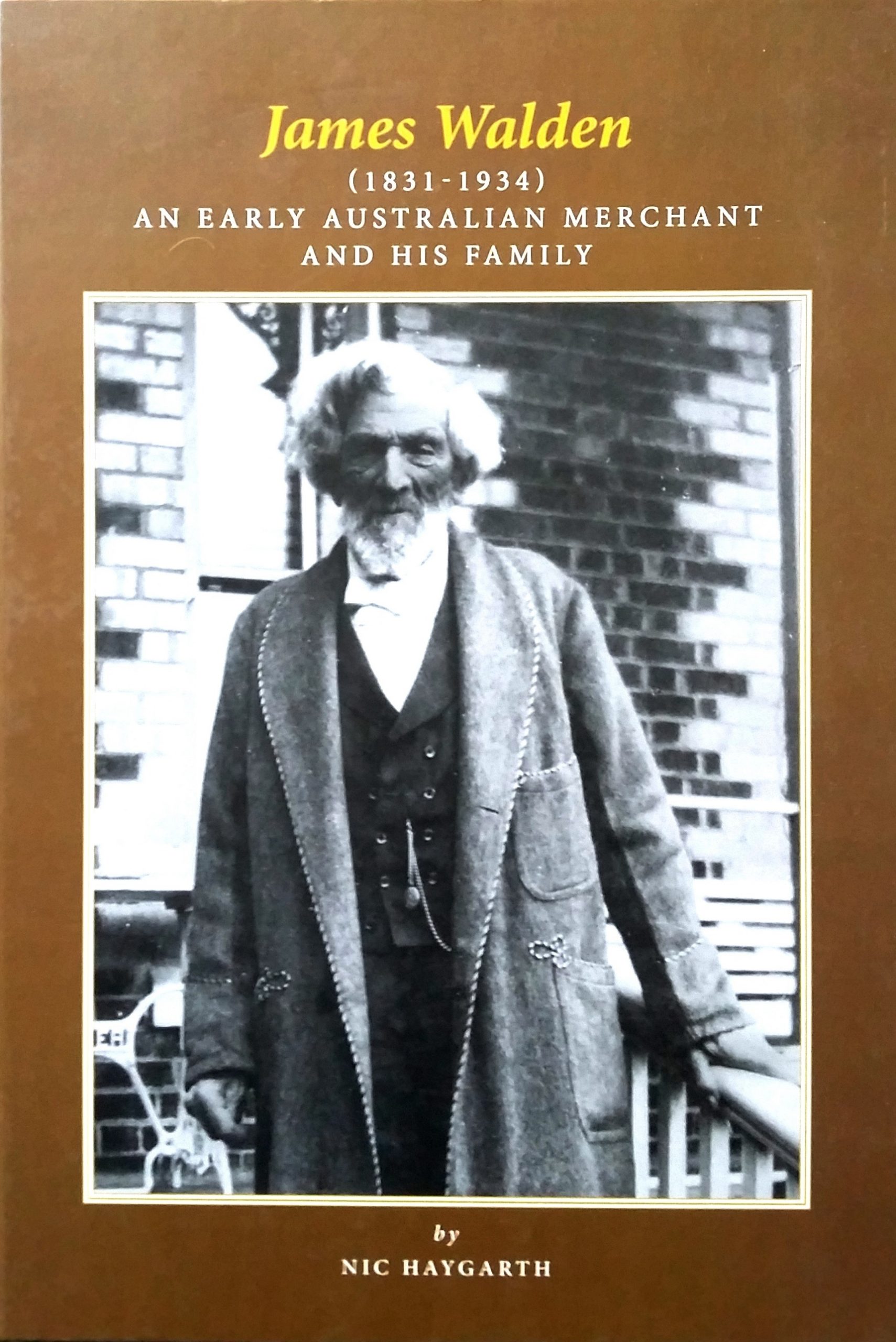
James Walden (1831–1934): an early Australian merchant and his family, Walden Family, Sydney, 2015.
The book is about Launceston skins and grain merchant James Walden (1831-1934) and his family. James was not only a man of remarkable longevity but of remarkable enterprise, amassing a fortune, building a magnificent house, ‘Beauty Park’ at Newstead, Launceston, and exporting not only to the mainland colonies and states but to New Zealand and England. Today his descendants are spread across at least four countries.
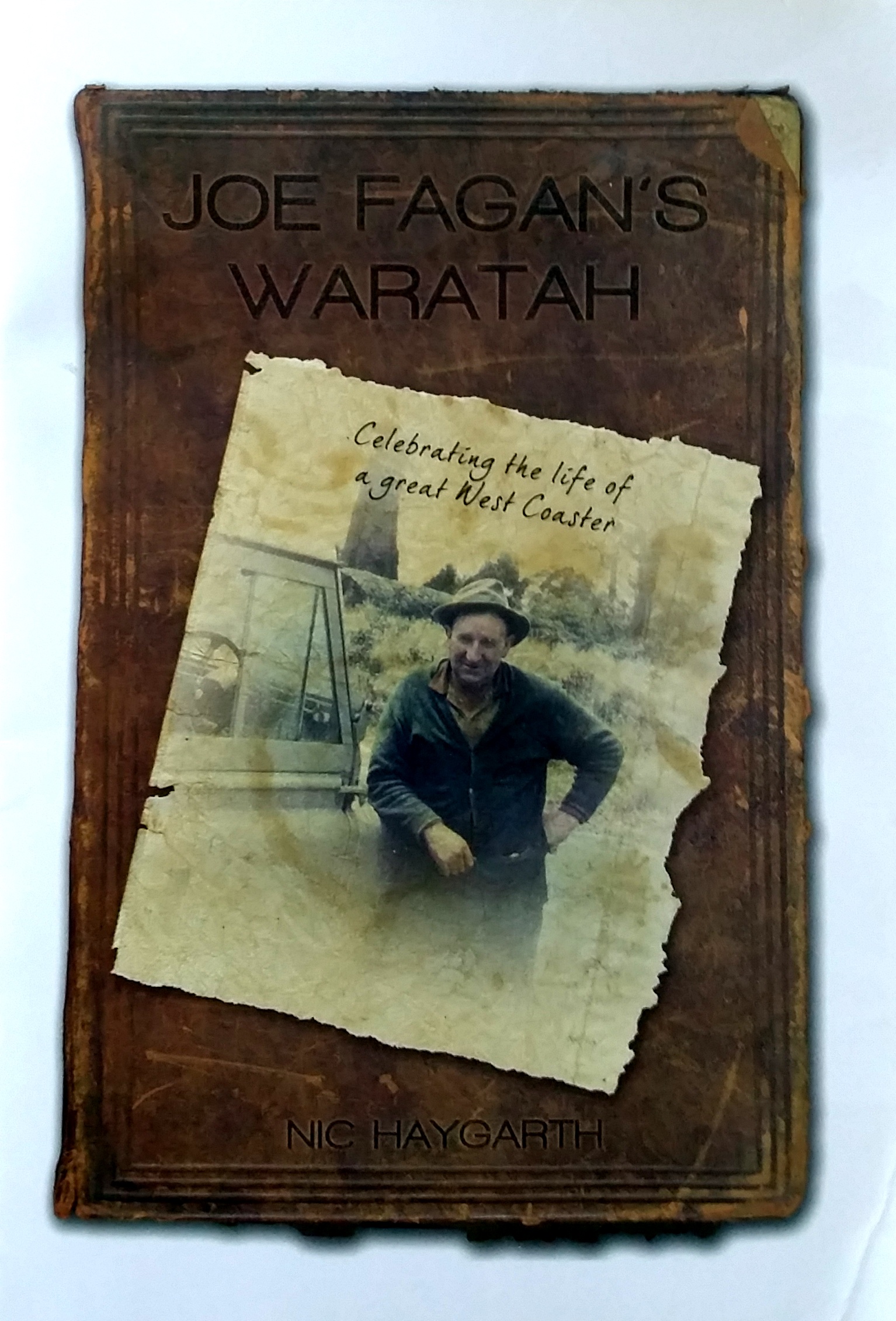
Joe Fagan’s Waratah: celebrating the life of a great west coaster, Joe Fagan Jnr, Waratah, 2009.
Waratah born … Waratah bred … Joe Fagan was a West Coast success story. When the dust settled on Waratah’s world-famous Mount Bischoff tin mine in 1947, the enterprising miner’s son was already building a workforce and marshalling machines. Joe’s command of heavy industry enabled him to exploit the West Coast’s ‘second coming’ after 1955—and thereby ensure Waratah’s survival. Mines like Savage River, Renison, Cleveland and Que River reverberated to Fagan haulage and construction work. Bushman axeman, publican, businessman benefactor and municipal warden: Joe was all these things and more. He was ‘patriarch’ of Waratah, renewing the historic Tasmanian town he called home.
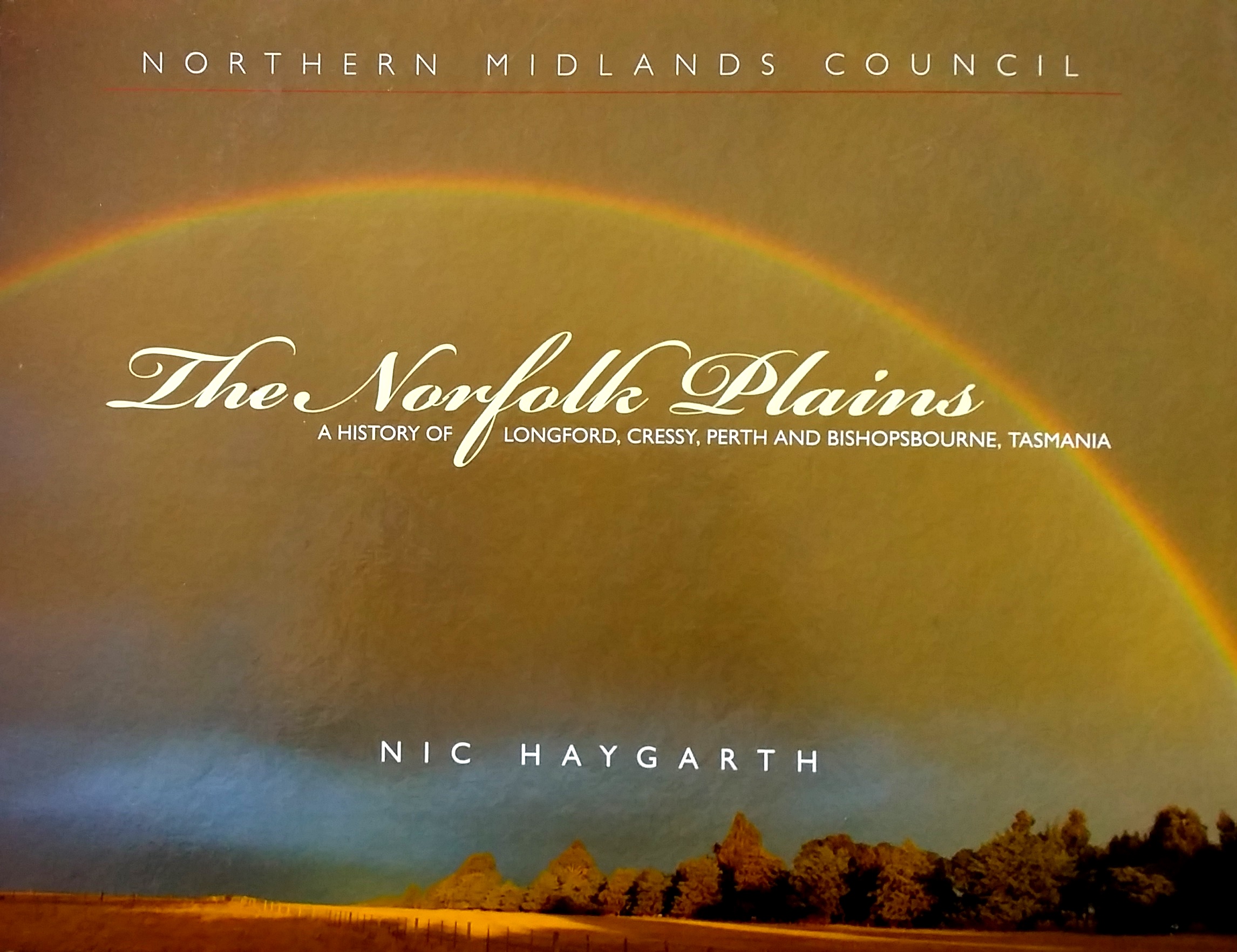
The Norfolk Plains: a history of Longford, Perth, Cressy and Bishopsbourne, Tasmania, Northern Midlands Council, Longford, 2013.
In 1813 members of the abandoned Norfolk Island community were resettled on flats along the South Esk River about 15 kilometres from Launceston. Governor Lachlan Macquarie christened these flats the Norfolk Plains. They belonged to the Panninher Aboriginal people. Tribal Aboriginals were dispossessed of their hunting grounds, on which European settlers placed wheat, sheep and assigned convict workers. Longford, Cressy, Perth and Bishopsbourne developed as community hubs and supply centres for one of the richest agricultural districts in Tasmania. Today the Norfolk Plains are famous not just for their farming produce, but for their convict heritage, Georgian buildings, picture-perfect scenery and their enterprising, creative people.
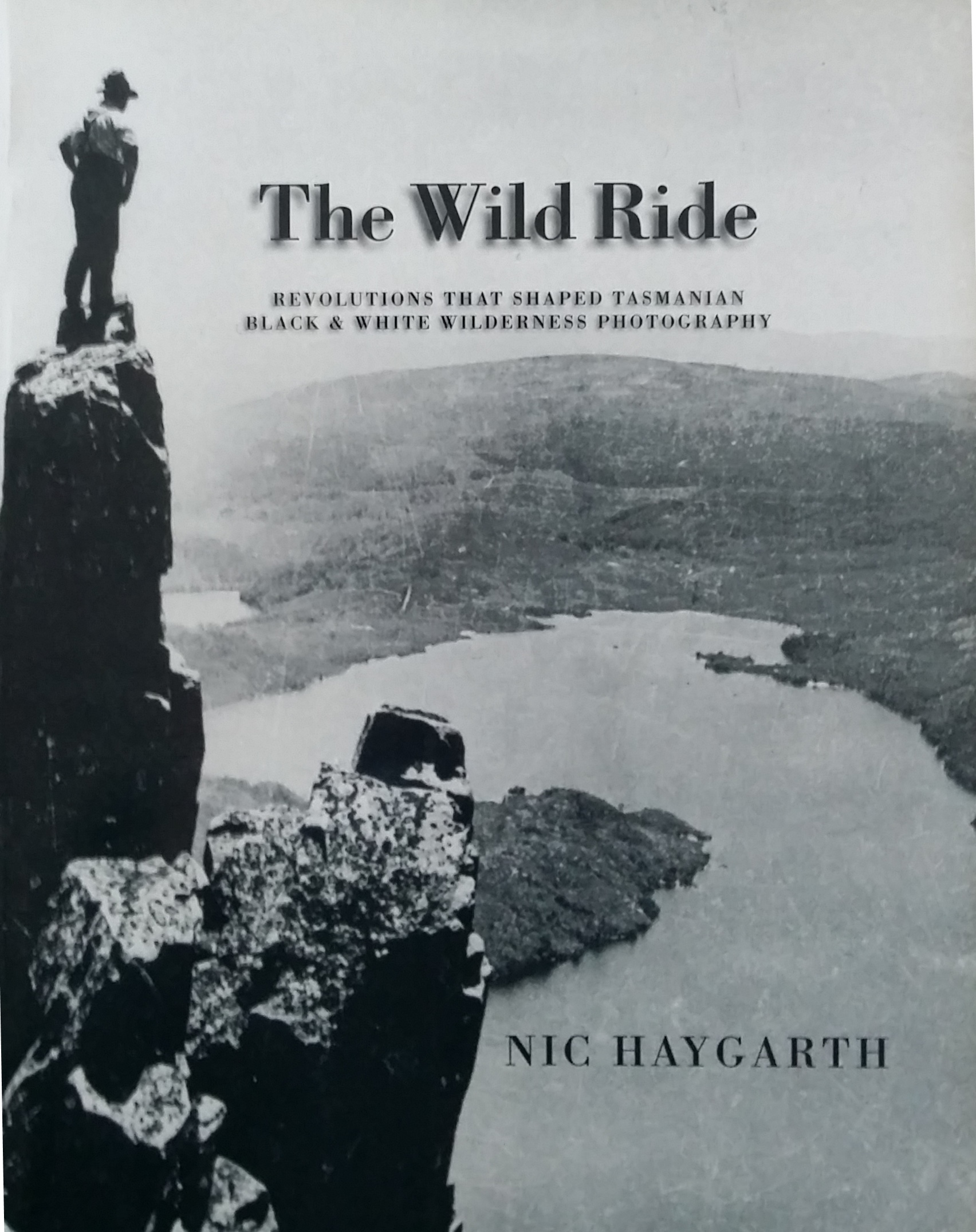
The wild ride: revolutions that shaped Tasmanian black-and-white wilderness photography, National Trust (Tasmania), Launceston, 2008.
The Industrial Revolution drove Tasmanian black-and-white landscape photographers out of town to meet the wild one. The dry plate freed them technically. The illustrated newspaper and the postcard brought them an audience. The mining boom railed them to the bush, and the internal combustion engine crashed them through it. Hiking took them places no shutter had snapped.
Social developments underpinned this charge: ‘muscular’ Christianity, higher living standards, ‘progressive’ nature study and the conservation movement. Wilderness photography raised environmental awareness long before Peter Dombrovskis’s ‘Rock Island Bend’ helped free the Franklin River in 1983. New ideas, new gadgetry, fresh vistas and mountain air fueled the black-and-white brigade’s rush for the bush. From the Sublime of John Watt Beattie to the Skyline Tour of Fred Smithies, The wild ride is their story.
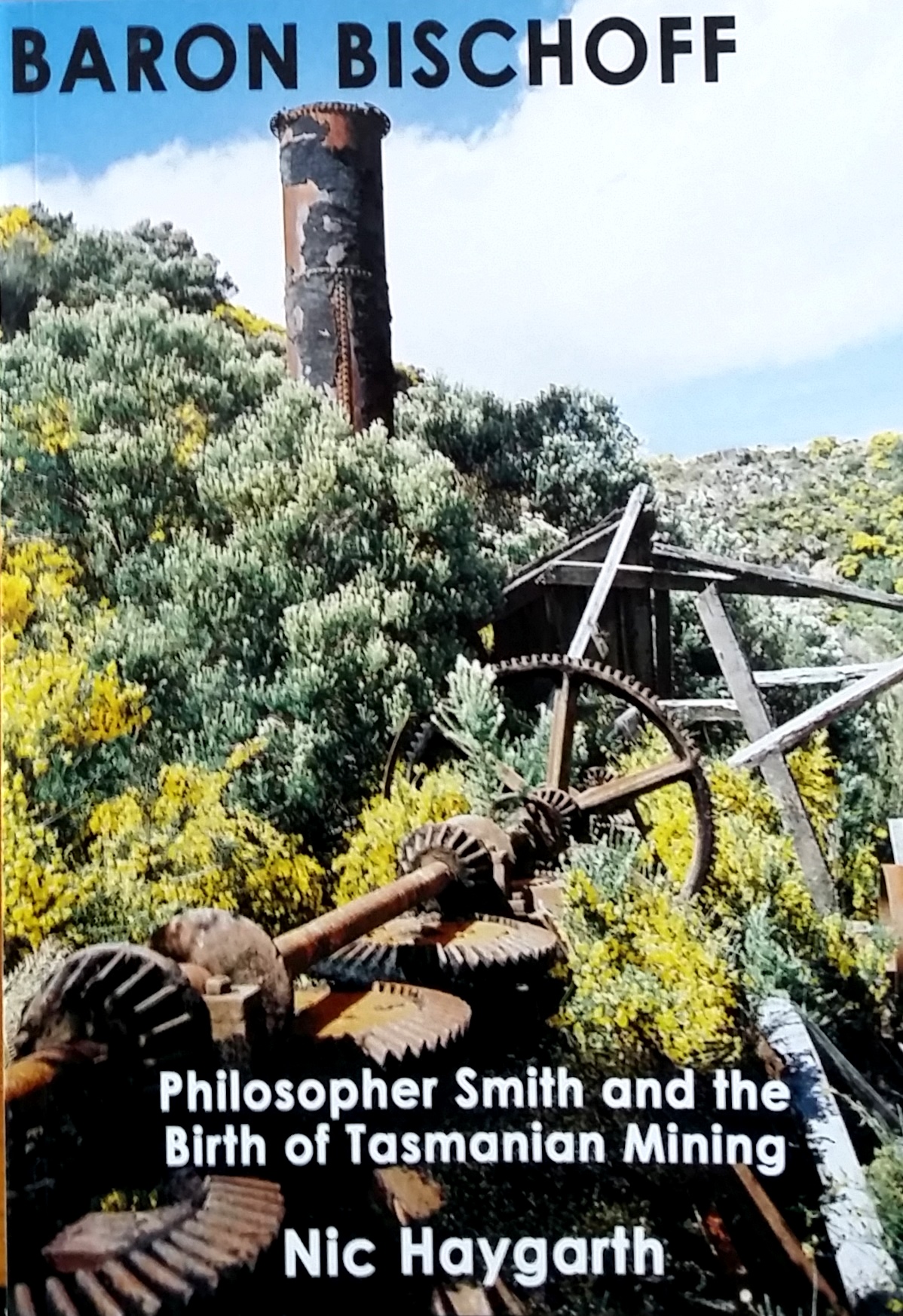
Baron Bischoff: Philosopher Smith and the birth of Tasmanian mining, the author, Perth, Tas, 2004.
For a man whose 44 years had been a lonely climb towards self-worth, the summit of Mount Bischoff must have been a giddy prospect for James ‘Philosopher’ Smith. He presided over a fortune, was embraced by his social ‘betters’, and was hailed as the father and saviour of Tasmania. All because of his discovery of tin in 1871, which triggered a mining boom and invigorated the island’s social, political and economic development. Perhaps there was some truth in contemporary depictions of one man’s journey into darkness which led to light.

A peopled frontier: the European heritage of the Tarkine, Circular Head Council, Smithton, 2009.
A peopled frontier explores two centuries of European use of an area known as the Tarkine, that is, the catchments of the Arthur and Pieman Rivers in north-western and western Tasmania. Chapters deal with European exploration, mining, droving and agistment, recreational and commercial fishing, hunting, transport, the timber industry, bushwalking, photography, off-road driving, canoeing, kayaking and rafting.
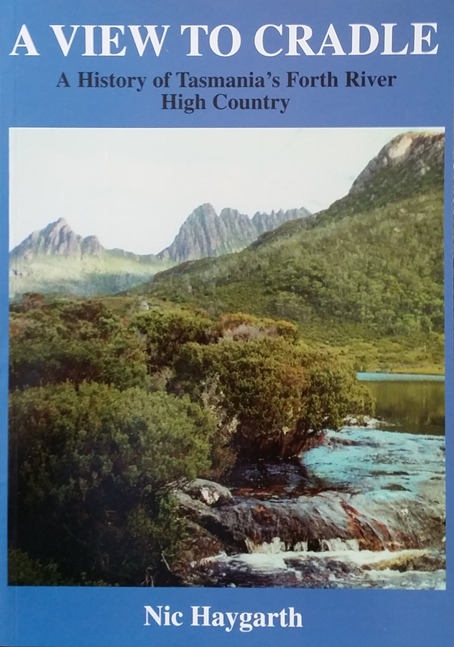
A view to Cradle: a history of Tasmania’s Forth River high country, the author, Canberra, 1998.
The Cradle Mountain ‘wilderness’ is famous throughout the world. However, until now the story of Cradle and its surrounds has not been told. A view to Cradle is the story of the Forth River high country, peopled by highland pioneers such as Henry Hellyer, James ‘Philosopher’ Smith and Gustav Weindorfer. The account ranges from clashes between the Aborigines and Europeans during the period of white exploration, through the grazing, hunting, mining and timber industries, to the advent of tourism and the development of the national park. Richly illustrated with the work of outstanding early Tasmanian photographers, A view to Cradle captures the life and the landscape of this wild region.
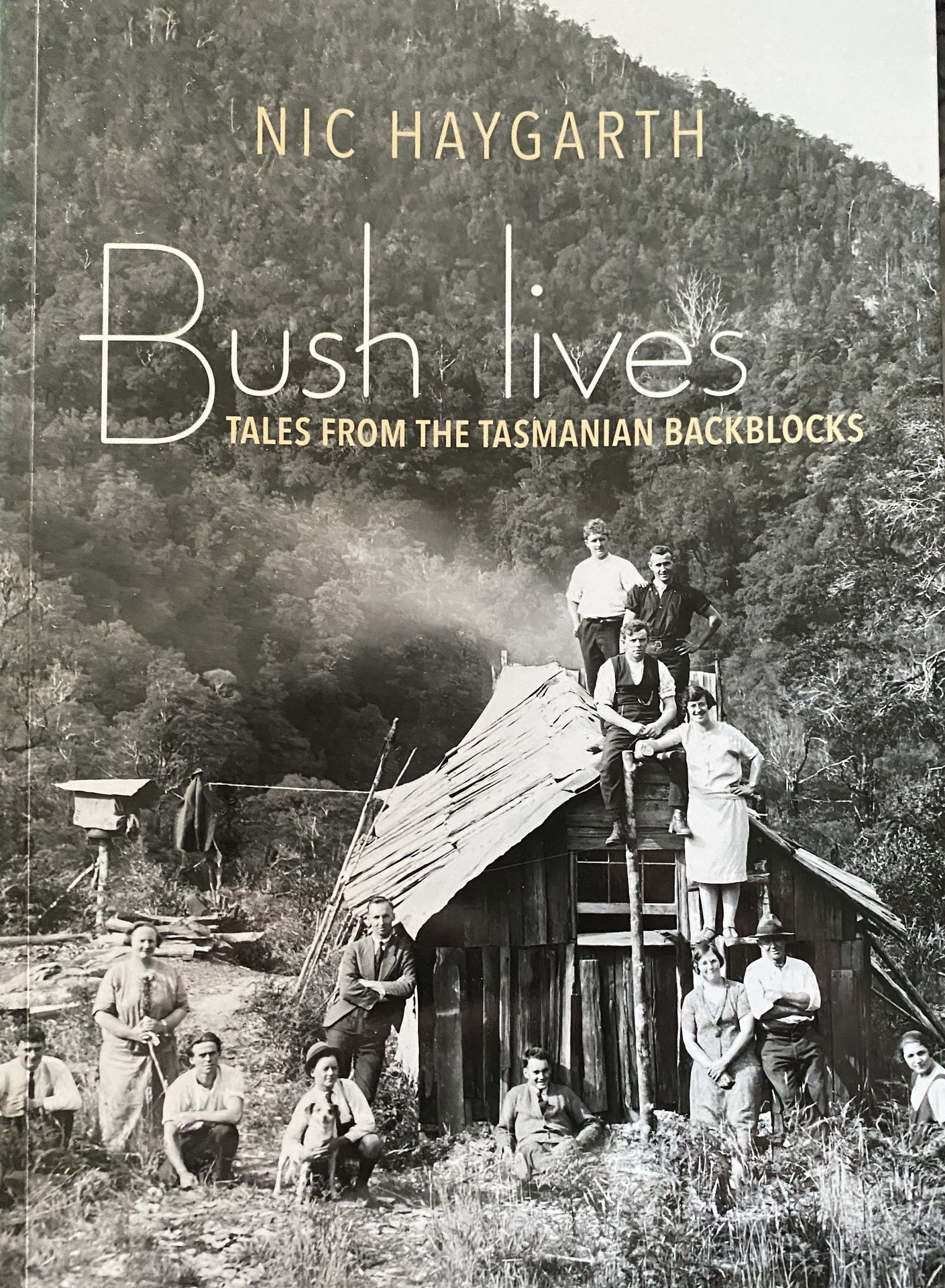
Bush lives: tales from the Tasmanian backblocks
Forty South Publishing, Cambridge, Tas, 2024.
This is a rich account of life and leisure in the Tasmanian back country. Myth, romance and bush lifestyles that have mostly ceased to be mix it with ‘townies’ taking the airs and speculators in scrip. Chance encounters with Tasmanian tigers (thylacines), the post-Christmas dash for the bush, tough lives in hunting camps, tragedy in mining camps and the everyday aspirations of ordinary people in remote places all flavour this book.
Copies signed by Nic will be delivered to your door.
